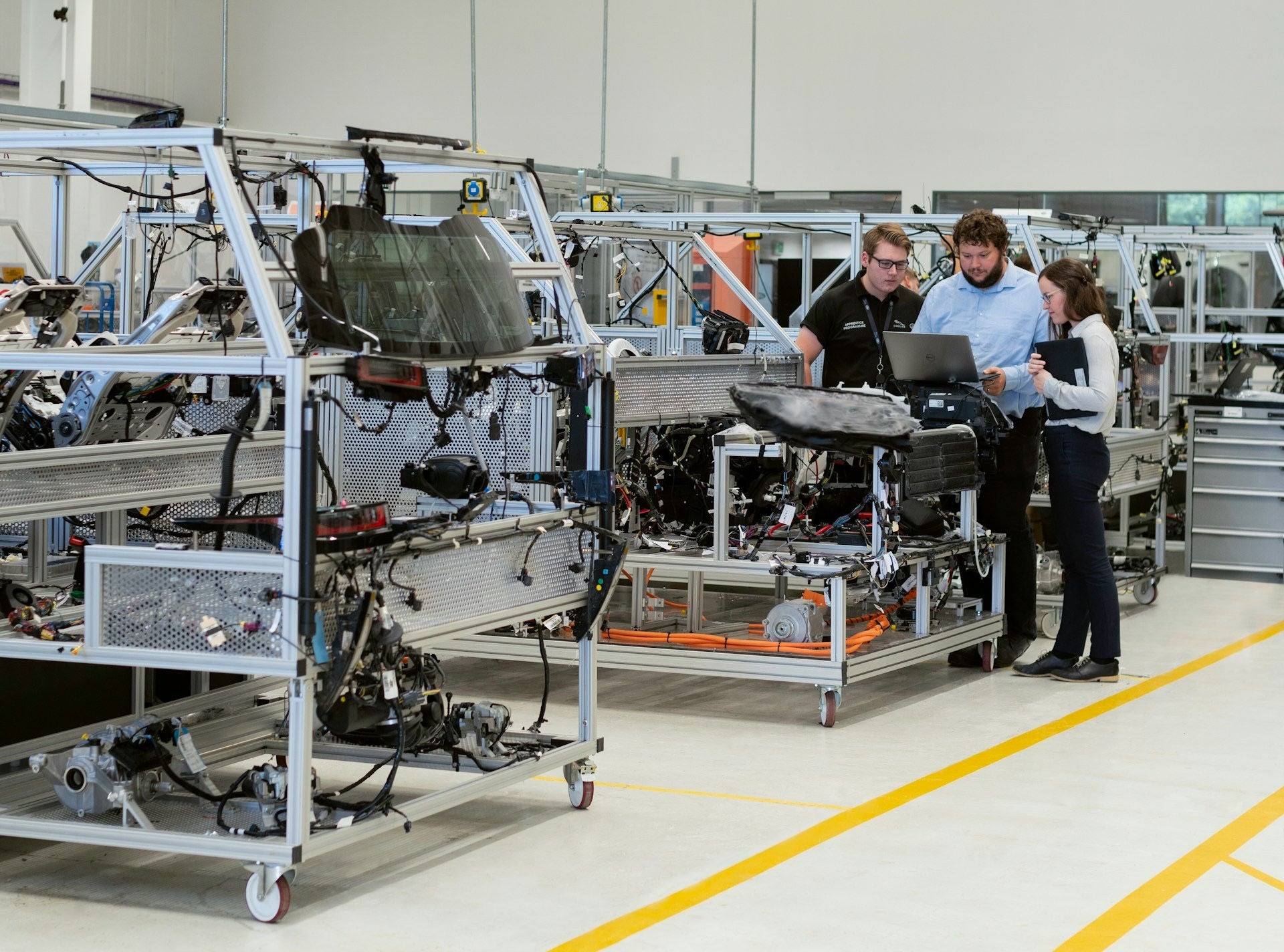The right way to transition from a legacy platform to a modern application

Executive summary
The transformation from a legacy system to a modern application can be an overwhelming undertaking for any organization. Companies need to update more than just the infrastructure and architecture; they need to take a holistic approach to change, including modernizing governance, security, compliance, development operations, and automation.
It would be easy for people, processes, and technology to adapt as they modernize these aspects in a perfect world, but often, it’s not. At Slalom, we recognize that application modernization is a complex, multifaceted journey that touches the whole enterprise. We realize that organizations need to overcome inertia and many other types of friction just to get started.
Let’s look at a recent cloud transformation Slalom conducted for a multinational retailer who updated an enterprise platform built on a monolithic architecture. We helped them push through their fears and achieve a successful modernization by:
- Assessing the current legacy platform’s capabilities
- Implementing the modernization effort
- Defining the future state, including a path to cloud
Motivation to modernize
The company wasn’t entirely new to the cloud—other business units had been running on Google Cloud Platform (GCP) for several years. But the business unit involved in this engagement handled sensitive customer data and had some very specific objectives:
- Put the business unit’s services on the same platform as the customer-facing application it serves (in this case, putting transaction processing services on the same platform as e-commerce to provide a seamless customer experience)
- Improve availability and reliability of existing solutions
- Address inefficiencies that existed because of their legacy systems
- Create an online customer experience that mirrors the experience in store
- Build an enterprise platform to support future growth and scale to multiple brands
Breaking through the inertia
Anyone working with a legacy platform will understand that one major barrier to modernization is the inertia created around the realization that documentation dwindles through decades. No one seems to understand a platform’s core capabilities fully. Since people only understand a specific area of their platform, they tend to worry about breaking something on a new system. Facing this apprehension is the key to starting a cloud transformation.
Our first step was to do a platform assessment to figure out its capabilities, through:
- interviews
- diagnostics
- software engineering tools
- breaking down the logic of the architecture
Mid-assessment, we faced the challenge of allocating time and resources between two priorities—running and improving the business. Another concern was pulling subject matter experts away from running the legacy system and risking an interruption in service. Our solution was to create a new team within the same business unit whose sole focus was to design a modern system. Once this was in place, we completed our assessment with them.
We created documentation and shared our findings with the original team, helping them fully appreciate the legacy platform’s capabilities and making them feel comfortable enough to move forward with the modernization.
What this means for the cloud
The company regained lost information and retained siloed data important to its transition to a cloud-based system by thoroughly assessing the legacy asset.
Goodbye, legacy systems
Another significant barrier to modernization was the monolithic architecture on which the company’s legacy platform was built. They were working with technology that the organization had invested in for over 25 years, and part of the problem was outdated hardware and other elements. They didn’t have a way of syncing data across their on-premises platforms and the cloud, causing delays in transferring important information.
During the project's implementation phase, we broke down the legacy monolith data flows. We rewrote them as a modern microservices stack that could run either on-premises or in the cloud, a core competency of GCP.
Compliance and lowering risk were another challenge. Because the business unit deals with sensitive data, the company requires certain processes to be performed within a specific function in the legacy system.
We helped them lower their risk by rearchitecting the flow of sensitive information to be processed by a trusted third-party financial institution; no sensitive data would ever touch their cloud. We also helped them automate security and compliance with different layers of security checks and established better role governance to ensure no one has unfettered access to private customer information.
When the team proved that they could execute a sensitive transactional operation without touching private data, that was a huge eye-opener into what was possible with modern cloud applications.
What this means for the cloud
As part of the new microservices-driven architecture, we set up the cloud infrastructure to host the microservices.
Getting set-up for the future
A critical piece of this modernization was establishing an enterprise landing zone. This is a solution that helps the client more quickly set up a secure, multi-account cloud environment with a trusted cloud provider.
The landing zone is a single point of entry to the cloud that facilitates security and compliance enforcement. The client wanted the ability to execute other cloud projects in the future. The landing zone helps onboard internal and external customers faster as the company moves toward multiple clouds.
There was a strong sense of partnership between Slalom and the client for the project duration. Our architects worked alongside their architects, our engineers alongside their engineers.
Because of this collaboration, there was a seamless transfer of knowledge, and decision-making happened jointly. To assist with the portion of the modernization involving people and processes, we conducted an Agile readiness assessment across teams and gave it to the client for documentation. A Slalom consultant’s goal is to work their way out of a job, and this project wasn’t any different.
What this means for the cloud
Whether an organization plans a multi-cloud strategy or goes from on-premises to cloud-ready to cloud-native, they’ll need new processes.
It can be difficult to carve out the time to do targeted, deliberate proof of concept for how the new processes will work in the cloud versus on-premises. But if the organization is trying to rethink key aspects of its business and make the cultural shift required for a cloud transformation, it’s worth it to invest time in the preparation.
Make a smooth transition to a modern application
While there’s complexity in this type of transformation, this framework of assessment, implementation, and defining the future state helps you know what to consider when your organization plans an application modernization.
At Slalom, we help our clients prepare for and execute cloud transformations intentionally and strategically to achieve their business goals.

